[Spirituality/Culture] Native American History Month
- Evangeline Del Cisne
- Nov 29, 2021
- 11 min read
An introduction to Native American culture via selected source material.
Written by Evangeline Del Cisne (@sacredways.spiritmedicine)
I am English, Spanish, Native American and African. My shamanic lineage comes from the Mvskoke (Creek) tribe, as well as my African ancestors. My own personal shamanic practice consists of astral travel and dream work, journeying into the lower, middle and upper worlds to retrieve messages for myself and others, as well as sacred song, plant and ceremony work.

November is Native American History Month and is the perfect time to delve into indigenous culture, history, art and more. For me, celebrating will entail singing the songs of my ancestors, cooking their food, communing with them in dreams and meditation, as well as brushing up on the histories of each tribe. With this introduction to Native American representation, I hope to present ideas of how to celebrate this month in a respectful way that will include honouring the past as well as indigenous people in the present.
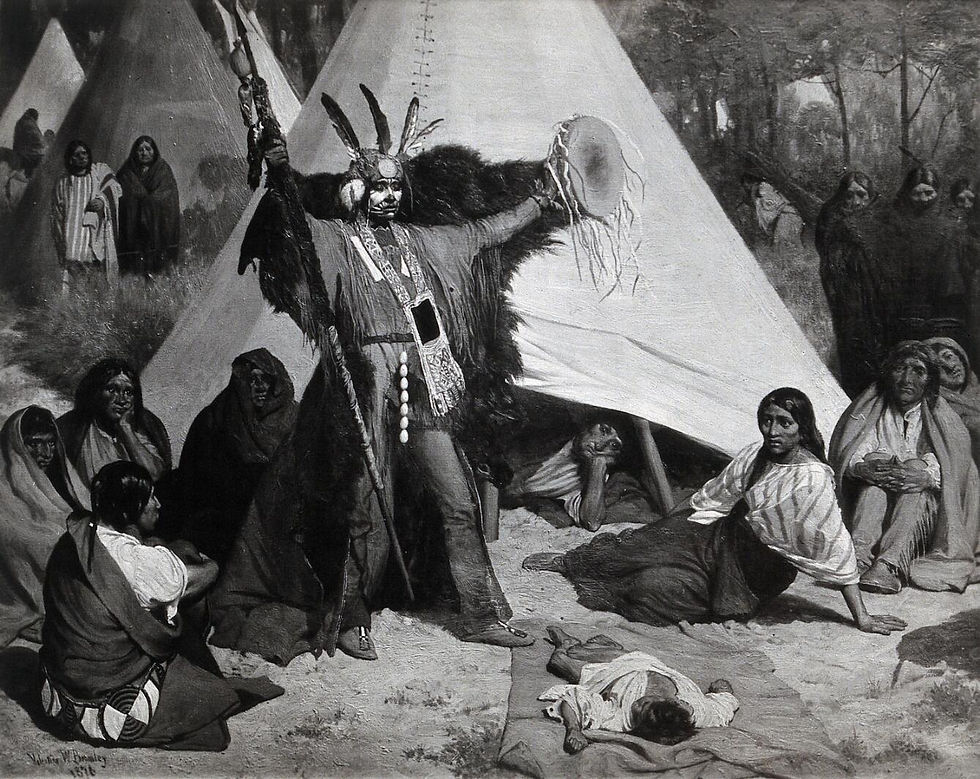
It’s important to understand that Native Americans are not a monolith, and all tribes have their own unique cultures and ways. Avoiding cultural appropriation and spiritual bypassing is also key to celebrating this month respectfully. We have so much to learn from these beautiful people, and so much to give back...
Below is a brief list of books, movies, documentaries and more that have greatly influenced my understanding of Native American cultures, but there are so many more amazing resources out there. I hope you will continue your research far beyond this list...

...Native American communities are still facing so much hardship, racism and pain due to colonization. It's imperative to give back to the tribes and peoples you are learning from. Inner work and decolonization are the best ways to do that, but donating directly to communities can go a long way too.
Missing and Murdered Indigenous Women USA:
“MMIW USA’s number one mission is to bring our missing home and help the families of the murdered cope and support them through the process of grief. We give them hands-on support and guidance. Our broader goal is to eradicate this problem so that the future generations thrive.”
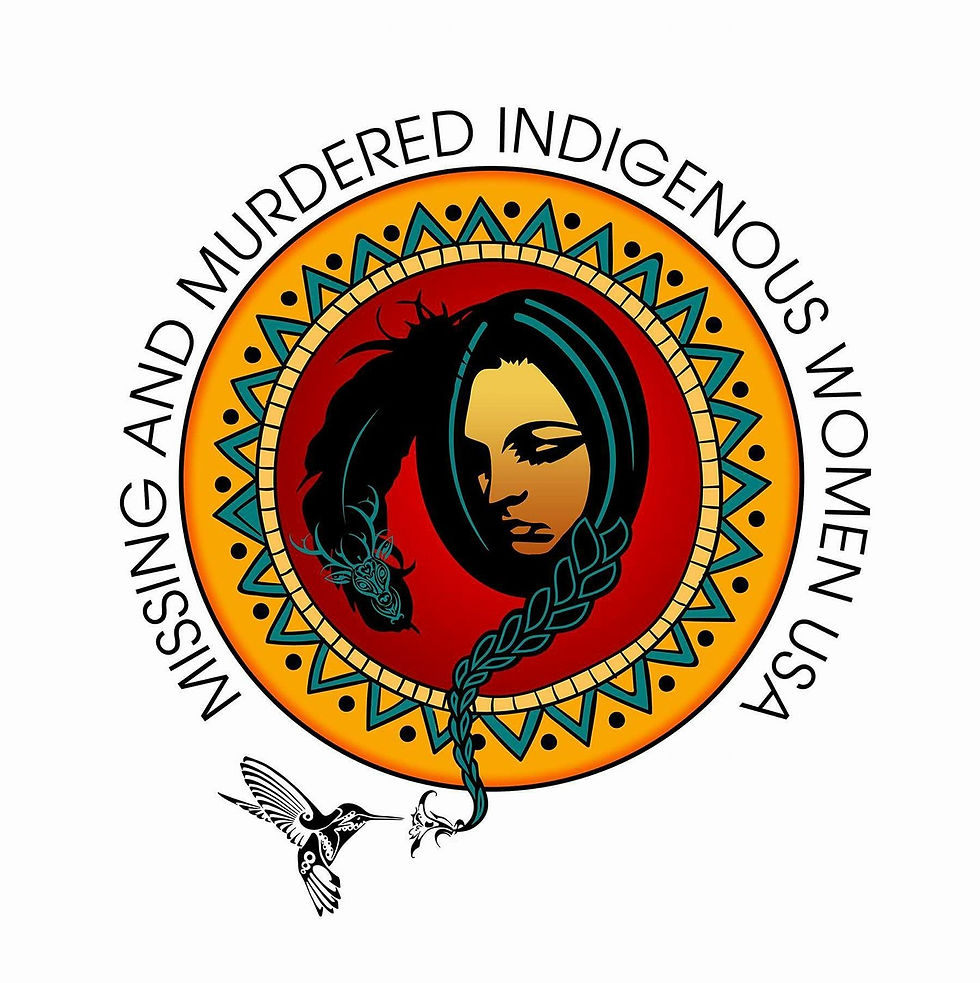
You can donate here: www.mmiwusa.org
Indian Residential School Survivors Society:
“IRSSS provides essential services to Residential School Survivors, their families, and those dealing with Intergenerational traumas. These impacts affect every family and every community across B.C and Canada. The fact is most evident in the Corrections Canada Services- the numbers of First Nations people incarcerated, Child and Family Services child apprehensions, the high number of people on social assistance, unemployment or underemployed, lower levels of education and more. The list of impacts is extremely high while the services available to effectively assist remain quite low”.

Donate here: www.irsss.ca
Mutual aid is a direct way of giving to people in need and it embodies the philosophy of indigenous worldviews. With mutual aid, we take responsibility for caring for one another and changing political conditions without third party interference. Many indigenous peoples have PayPal links, GoFundMe's or CashApp’s where they are raising funds for healthcare, mental healthcare costs, and many other things to deal with the devastation of colonial trauma. This is the most effective way to monetarily give back, and these fundraisers can mainly be found on social media. @lilnativeboy is a Dine-Lakota writer and activist who frequently shares mutual aid requests on his account

The Indigenous Worldviews Course at the University of Toronto (Available for free on Coursera)

This 6-week course is a treasure trove of deep Indigenous wisdom, it has been foundational for me in fully understanding how to decolonize my mind, how to identify what is colonial and what isn't, and it has helped me validate the way I have always experienced the world. Many different topics and indigenous cultures are covered. It delves into sources and characteristics of indigenous knowledge, the relationship indigenous people have with place and environment, racism and stereotypes. They also provide many priceless resources that may be difficult to access unless you are in an academic setting. A true gem of a course that has the power to deeply transform your consciousness.
American Indian Prose And Poetry – An Anthology (1946, Margot Astrov)
I grew up with this book on our bookshelf, and I would find myself reading the poems and stories often. It’s a compilation of poems, myths, legends and ceremony songs from different tribes all across America. It’s a beautiful book and presents an opportunity to soak up indigenous wisdom.

It spans the human experience, from death and creation to love and grief. The indigenous worldview is wrapped up in these beautiful words; dreams, animal spirits, medicine and the Earth are all frequent topics.
Two Dream Songs Of Siyaka
1.
At night may I roam
Against the winds may I roam
When the owl is hooting
May I roam.
At dawn may I roam
Against the winds may I roam
At dawn may I roam
When the crow is calling
May I roam.
2.
When the wind is blowing
The wind is roaring
I stand.
Westward the wind is blowing
The wind is roaring-
I stand.
“Dream songs are the most precious spiritual possession of the individual, received by the vision-seeking youth, after much suffering and loneliness, in a dream. The obligation of a dream, says Miss Densmore, was as binding as the necessity of fulfilling a vow. That the wished-for dream would correspond to the character of the man was recognized by the Sioux. The nature of the dream allied the man to others who had similar dreams. “If the dreams were connected with the sacred stones, or with herbs concerned in the treatment of the sick, it was considered obligatory that the man avail himself of the supernatural help vouchsafed to him in the dream, and arrange his life in accordance with it”. - From page 121 of the Winged Serpent.
Bury My Heart At Wounded Knee: An Indian History of the American West
(1970, Dee Brown)
This book recounts the history of the American West during the years 1860-1890. Stories from Native American figures Sitting Bull, Crazy Horse and Geronimo are all woven into the pages.
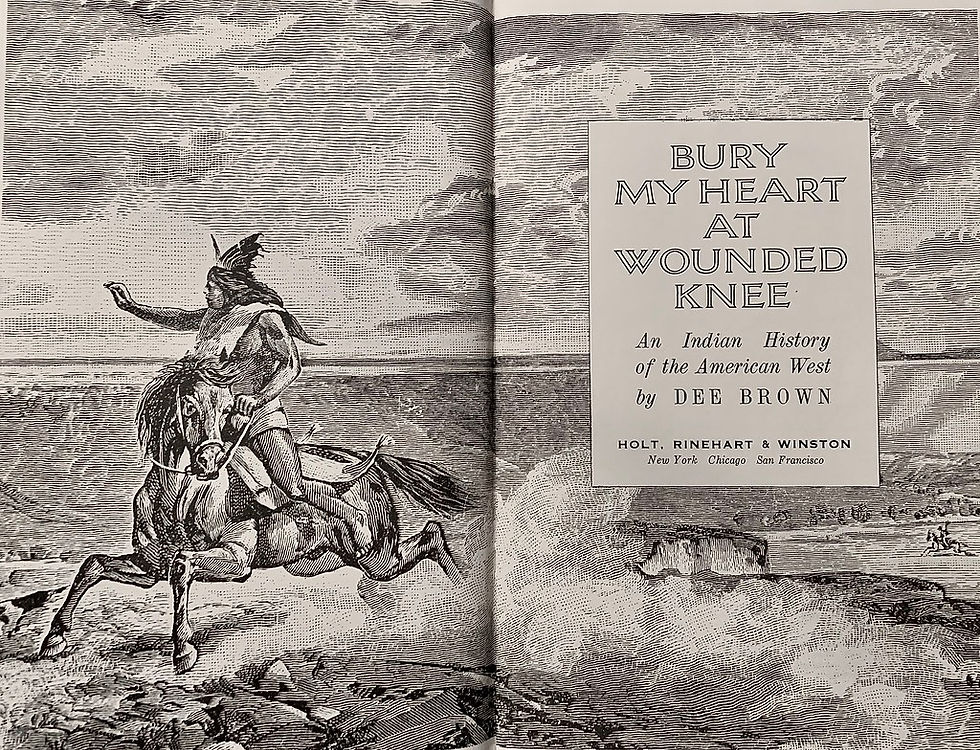
The book details the years of war, massacre and trauma faced by many different Native American tribes, and the Long Walk of the Navajos and the massacre of the Sioux at Wounded Knee. It is a must-read for anyone seeking the truth about indigenous peoples in America.
“This is not a cheerful book, but history has a way of intruding upon the present, and perhaps those who read it will have a clearer understanding of what the American Indian is, by knowing what he was”- Dee Brown
Wild Indian (2021, Lylle Mitchell Corbine jr)
Wild Indian focuses on intergenerational trauma in native communities from the perspective of schoolboy Makwa, set on a reservation in Canada. At the beginning of the film, there is a shot of a pre-colonial Native American who we assume is Makwa’s ancestor, sick with smallpox passed on by the colonists. Early on, we see that the film is tracing modern native Americans trauma back to the original trauma of colonization. He is brought up by alcoholic parents and suffered extreme neglect and abuse. He also attends a Catholic school, which notoriously abused many indigenous children and were set up specifically to tackle “The Indian Problem” and erase indigenous culture, knowledge and practices. This film takes an indigenous view of zooming out and looking at the whole, rather than the western perspective of zooming in and examining minute details of specific issues. The film makes it clear that his family's abuse is directly tied to the genocide their ancestors faced; in fact, it cannot be separated from it.
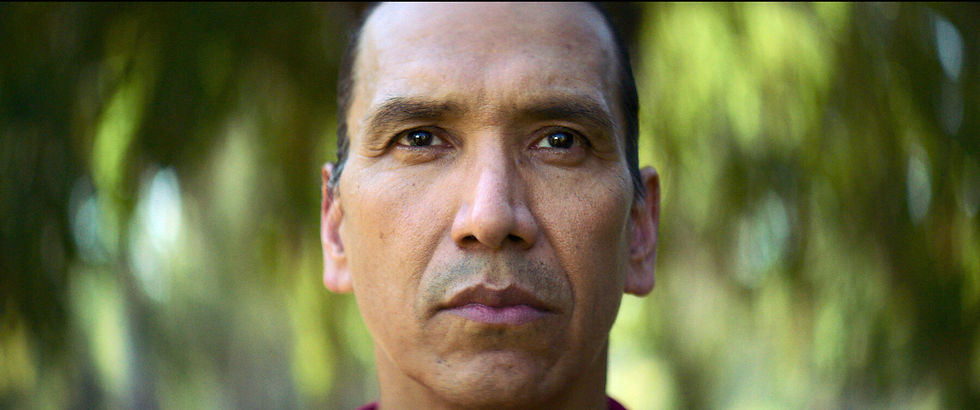
Makwa internalizes his oppression and colonization, as we see him start to hate his own people and culture because of how dysfunctional life on the reservation is. He starts to aspire to be like a white man, to be successful in capitalism and the business world- and he achieves this throughout the film, but we see that he who was once a victim, becomes the victimizer. The audience clearly sees that his life in the colonial business world is just as dysfunctional as his life on the reservation was, but he is more able to put up a façade and hide the truth of his inner world.
Star Ancestors: Extraterrestrial Contact in the Native American Tradition (2012, Nancy Red Star)
This book documents and explores long-standing contact between Native American tribes and extraterrestrial visitors. It includes the stories, art and histories of the Star People from many different tribes. In our culture, anything to do with “aliens” or spirituality is seen as New Age or simply something to be dismissed. Books like this remind us that this way of thinking is rooted in anti-indigenous sentiment and colonial thinking.

Extraterrestrial contact, precognitive dreaming, astral travel and so much more has been documented by indigenous cultures and is a key part of the indigenous worldview. The tribes written about in this book see the Star People as our ancestors, our relatives who seeded us on Earth and who can teach us many things. Refreshing and fascinating, a must-read for all who are seeking to radically alter their perception and worldview.
Encounters With Star People: Untold Stories of American Indians
(2012, Andy Sixkiller Clarke)

A brilliant companion to Star Ancestors, this book is a collection of stories from modern Native Americans oral histories of extraterrestrial experiences.
Sacred Instructions: Indigenous Wisdom for Living Spirit-Based Change (2018, Sherri Mitchell)
Sherri Mitchell is an activist and attorney, who calls upon ancestral wisdom as well as conversations with tribal elders in this incredible work. The book is a deep call to return to the sacred indigenous ways- it is a deep challenge to decolonize our minds and see the world with new eyes. She tackles issues from loneliness to environmentalism and everything in-between. This is not just a book, it is a prayer, it is sacred medicine for the soul.

“We must tune in to our ability to see beyond the physical reality that surrounds us and awaken to the vast unseen world that exists. Then we can begin to see beyond sight and to hear beyond sound. We see the underlying structures that support our world, and life begins to take on new shape, new meaning.”
Wind River (2017, Taylor Sheridan)
Wind River is a harrowing portrayal of the missing and murdered indigenous women epidemic that still plagues native communities to this day. Set on the Wind River reservation in Wyoming, it details the fictional investigation of a young woman who has been murdered out in the wilderness.
The film reflects on the racism within the US police force, the misogyny that lives deep within the roots of colonial culture, and the trauma of native families that have to bury a sister or wife or cousin every few years, with no answers as to who the killer may be. Sheridan stated he wrote the film to raise awareness of the high number of indigenous women that are murdered and raped every year, both on and off reservations. This film is a deeply powerful look into the reality of so many native women's lives.
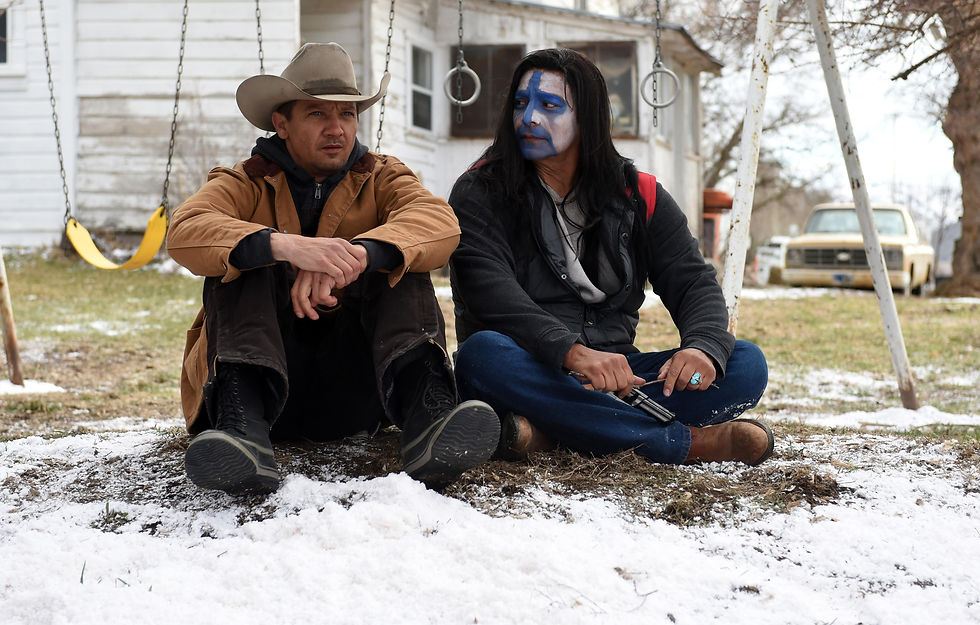
Nature has an important role in Wind River. Reservations were patches of land given to Native Americans, that were usually barren and in the middle of nowhere. Indigenous peoples were forcibly removed from their homelands and onto these foreign lands, and even today many reservations have incredibly bleak living conditions with many not even having running water.
The film brilliantly captures the bleakness of that landscape, it’s a reflection on how the land will often reflect our inner world and our inner world will often reflect the land. There is so much trauma in native communities' post-colonization – the loss of indigenous language, culture and land has never been fully acknowledged by the US state. The film does a great job of highlighting the link between misogyny and our treatment of the Earth. The murderers turn out to be construction workers working on a nearby pipeline. How we treat the Earth is also how we treat women, and many construction projects are notoriously damaging to the environment. The film showcases how sacred women and the earth are in indigenous cultures.
We Shall Remain (2009, PBS)
This 5 part documentary details the history of Native Americans from the 17th Century to the 20th. A deeply immersive, multi-media experience that focuses on many different tribes and events in history.
What Was Ours (2016, Mat Hames)
Set on the Wind River Indian reservation, this documentary explores sacred Native American objects and artefacts which are now locked up in colonial museums, and how they got there in the first place. It grapples with the trauma of many Native people not knowing their own histories or cultures and feeling disconnected from their roots.
Oren Lyons on the Indigenous View of the World (2016, Tree Media)
An incredible conversation with a faith keeper of the Turtle Clan, Onodaga Council of Chiefs. In this beautiful film, he passes down sacred knowledge and wisdom, speaking on many different issues facing modern humanity.
A Gathering Basket: Monthly Online Indigenous Cookbook (the i-Collective)

Eating my ancestral foods is one of the main ways I connect to my ancestors, but Native American cuisine can be enjoyed by all. The I-collective mission statement says “Food is our most intimate connection to ourselves, our ancestors, our communities, and most importantly, our future generations. Our vision is to increase visibility, own our foods and culture, and promote Indigenous ingredients and histories in our modern world”. The online cookbook is a multi-media project comprised of recipes, videos and essays and has been created by Indigenous chefs and home cooks.
The New World (2005, Terrence Malick)
The New World is a loose take on the Pocahontas story. This film is not without its problems, most notably the way it downplays the brutality of colonization and seemingly erases the endemic violence against women. It is by no means a historically accurate account; however, the film still has much to offer. Shot in documentary style, this film perfectly portrays the somatic event of colonization. An indigenous movement coach was hired to direct the indigenous cast, this film captures an authenticity of place and culture that is hard to find in any other motion picture. The viewer is truly transported back to a pre-colonial America. We watch Pocahontas go from a free-spirited girl who is constantly in motion, and wearing very few clothes, expressing her emotions loudly and freely- to someone who exists in tight corsets, slick buns, white face powder and who keeps her emotions stuffed inside of her. As her clothes tighten and bind her body, her emotion and spirit also stiffen. We see her give up her culture and become renamed Rebecca, travelling to England with her British husband. The contrasts of the untamed American wilderness and the built-up British empire is a stark reminder of what we have all lost.
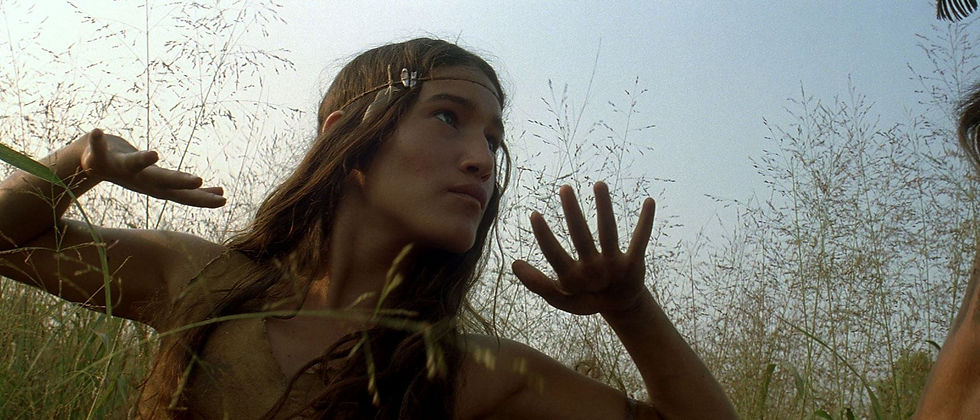
Nature is one of the main characters in this film, and the way indigenous people are so closely in relationship with it is constantly demonstrated throughout the film. It is cinematically stunning and leaves the viewer with much to reflect on. Nature permeates everything in the film; their clothes are made from animal skins and furs, their huts are made from natural materials, they hunt and forage what is around them. Throughout the film we see that the English colonists are battling with nature, whereas the Indigenous people are flowing with it. Even though the synopsis describes this film as a love story, I think the real story of this film is a meditation and reflection on our relationship with nature and how that’s been destroyed. It is important to remember the true story of Pocahontas whilst watching this film, as it neglects to mention that she was a 12-year-old child who was kidnapped by John Smith and his crew, the reality was anything but a love story.
The White Colonial Mind Course: taught by Dr. Rosales Meza

Medicine woman Dr. Rosales Meza describes this course as a weekend intensive of unlearning and healing from the white colonial mind. She explains: “The intensive is for the white people who seek to right the wrongs of their colonial ancestors, for those who seek to reckon with the harm that they and their ancestors caused. This intensive is for those who seek to do their shadow work to divest and co-create a new paradigm that ends predatory, extractive, colonial ways so that we can return to the times of harmony and balance”. Topics covered include: How colonization and whiteness are linked, Subconscious white colonial programming, Neocolonialism and so much more.
You can sign up here: www.whitecolonialmind.com
You can also find Dr Rosales Meza on Instagram where she shares many spiritual and decolonial lessons @dr.rosalesmeza
- PSYCHIC GARDEN



![[Art/History/Culture] Kitab al-Bulhan - "The Book of Wonders" (14th Century)](https://static.wixstatic.com/media/78e459_1c4842a9507a4621a5f9f907cfbeb6f4~mv2.jpg/v1/fill/w_623,h_500,al_c,q_80,enc_avif,quality_auto/78e459_1c4842a9507a4621a5f9f907cfbeb6f4~mv2.jpg)
![[Art/Culture] Egyptian Dictionary of Illustrated Mythological Creatures](https://static.wixstatic.com/media/78e459_2f08e78f72be45b691fc9c4049d535fb~mv2.png/v1/fill/w_980,h_742,al_c,q_90,usm_0.66_1.00_0.01,enc_avif,quality_auto/78e459_2f08e78f72be45b691fc9c4049d535fb~mv2.png)
![[Art/History/Culture] Siyah Qalam: An Unknown Genius (14th Century)](https://static.wixstatic.com/media/78e459_c9820e9063624603b7975608c97cdcc1~mv2.jpeg/v1/fill/w_980,h_659,al_c,q_85,usm_0.66_1.00_0.01,enc_avif,quality_auto/78e459_c9820e9063624603b7975608c97cdcc1~mv2.jpeg)